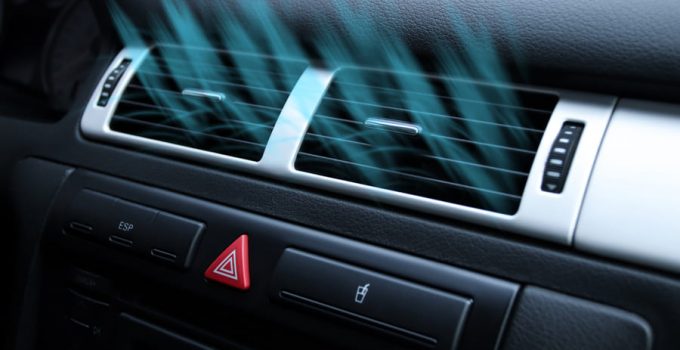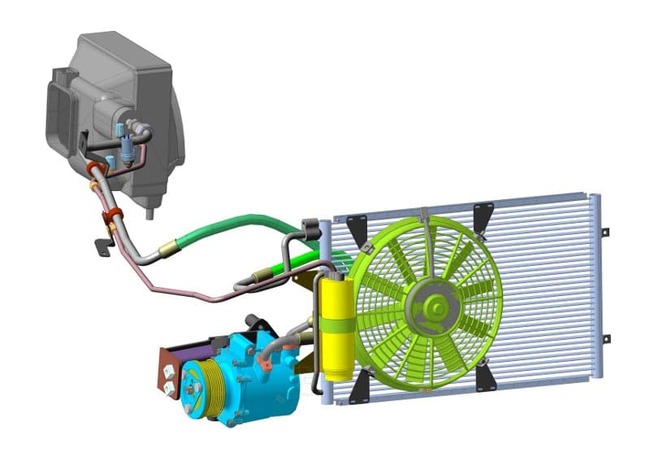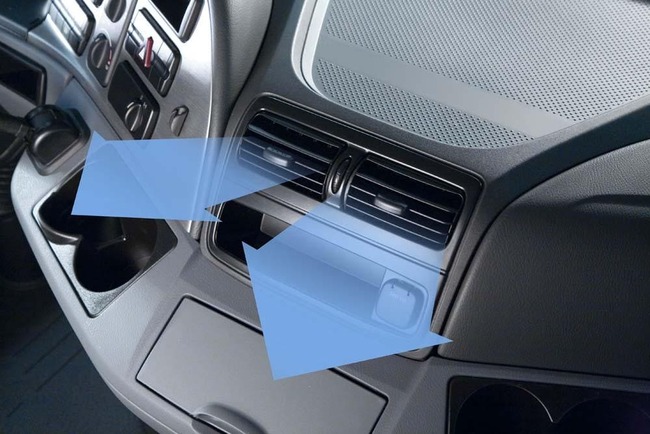
We tell you what problems arise during the work of an air conditioner know how to fix them and, most importantly, how to avoid them.
Contents
How the air conditioner works and why faults occur
The purpose of this part is to cool the air in the cabin, in addition, the air conditioner also cleans, dries the air and provides circulation. Compared to indoor air conditioners, car air conditioners are powered by the engine and since the vehicle is regularly in motion, they are exposed to the negative influence of external factors. Temperature changes and invariable vibrations can lead to failure of individual components of the air conditioning system.
To understand the reason for the improper system work, you must first understand its structure.
Construction of the air conditioner
The air conditioner performance is based on cooling circulation in a closed system: it changes from liquid to gaseous state to absorb the heat.
The components of an air conditioner include:
- A compressor. It compresses the refrigerant gas so that it can circulate in the system.
- An electromagnetic clutch. This provides the task of the compressor.
- A condenser. This cools the coolant with air generated when a fan spins or the car moves.
- A filter drier. The receiver smooths out the coolant flow fluctuations while the drier absorbs the moisture from the coolant.
- A thermal enlargement door. Discharges the coolant in the evaporator by controlling the supply rate depending on the evaporator exit temperature.
- An evaporator. It actually cools the air down.
Some air conditioners are equipped with an vent tube instead of a thermal expansion valve. Their structure includes an accumulator dryer. The accumulator acts as a reservoir for the coolant.

The most common defects of a car's air-conditioner
Contamination of system elements. Serious contamination of the condenser causes its overheating, which results in increased pressure on the system. The air conditioning work in this case will be inefficient: the air in the interior will not be further cooled. If the air conditioner components become contaminated, they should be washed immediately. If an unpleasant odor enters the cabin while the air conditioner is operating, it may indicate that the cabin filter is blocked. The latter is a consumable item and should be replaced. It is generally recommended to replace the cabin filter every 20,000 kilometers. However, many car owners replace it more often – every 10,000-15,000 kilometers, or roughly every six months.
The system integrity damage and a coolant leak. The defect can be indicated by the malfunction of the air conditioning system and traces of oil on the compressor surface or on other system components. The damage can be caused by a force impact, for example, as a result of a car accident, or by the end of the usual service life of the sealing elements. To solve the problem, the faulty components should be replaced and the system should be filled with new coolant.

Compressor terminals
The most telling signs of this defect are abnormal compressor noise, traces of oil on the part surface, and in some cases an impossible engine start. Parts binding can be caused by wear or insufficient oil level in the system. In the event of such defects, the compressor should be replaced.
An inconsistent performance of the thermal magnification door. In the event of a malfunction of the part during the work of the air conditioner, the cooled air periodically enters the interior and the unit itself can accidentally turn off. In addition, this defect leads to freezing of the evaporator hoses. Malfunction of the thermal enlargement flap can be caused by mechanical damage or improper adjustment of the car part, as well as contamination of the system from the inside. This part is often not subject to repair and requires a replacement in the event of a defect.
A faulty capacitor. This leads to the fact that the air conditioner does not respond to turning on or simply turns off when driving the car at low speeds. The most common cause of capacitor failure is contamination of the part itself as well as that of the control system main connector. In the event of this defect, the condenser and related elements should be cleaned quickly. Otherwise, incorrect functioning of the condenser can result in increased pressure in the air conditioning system.
Evaporator defect. The appearance of water and an unpleasant stench in the interior is the indication of such a malfunction. The causes of evaporator defects are dirt and blockages in the liquid drain tube. Cleaning the latter will fix the problem. In the event of evaporator corrosion, the part must be replaced.
Note!Repairing and refilling the air conditioner requires special knowledge, skills, tools and consumables. It is therefore advisable to leave these tasks to experts only.
How to prevent the_defects of an air-conditioning system
The malfunction of any car component, including the air conditioning system, is much easier to prevent than to eliminate. To save on repair and maximize car air conditioner lifetime, you must follow these simple rules:
- Turn on the air conditioner regularly, regardless of the season. Once or twice a week for 10 – 15 minutes will be enough.
- Warm up the interior of the car before using the air conditioning in the cold season.
- Thoroughly wash and blow out the condenser if you clean the car.
- Self if there are no signs of a defect, you should refill the air conditioning system every 1 – Run 2 years.
Conclusion
If you fill the air conditioner with the refrigerant and oil and replace worn out elements, you should only give preference to components and consumables from trusted manufacturers. Make the purchase from reliable web shops that provide quality assurance of their products. Also, the work of the air conditioner should be carried out in accordance with the requirements provided in the manufacturer's documentation. By following these simple instructions, the component will last a long time!
